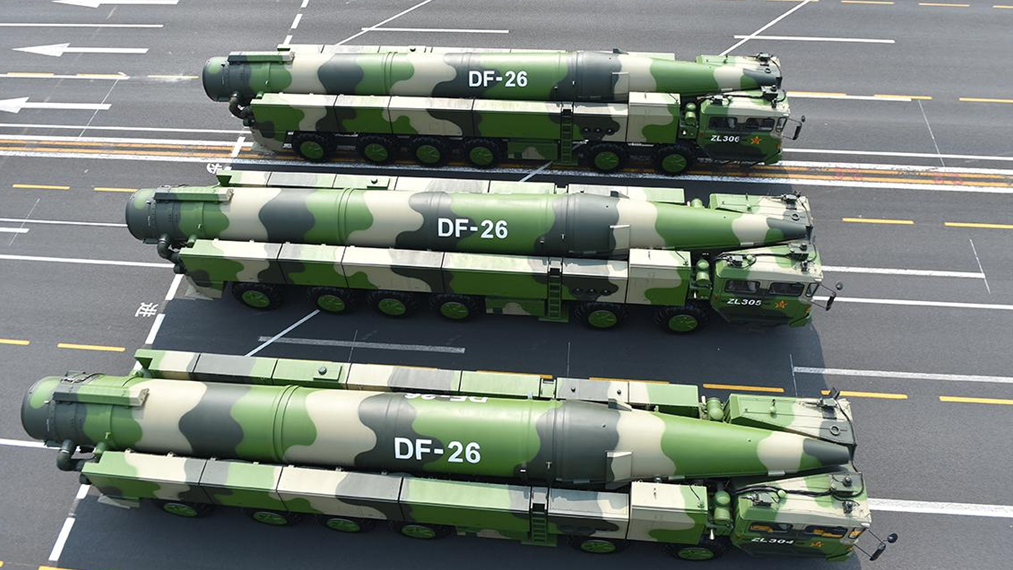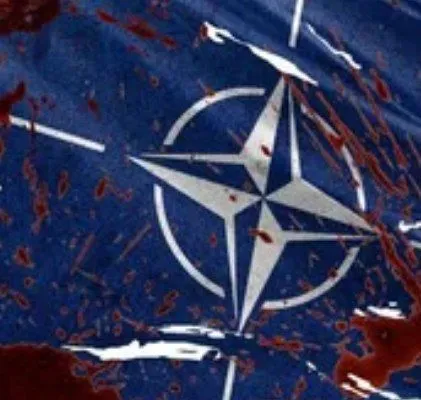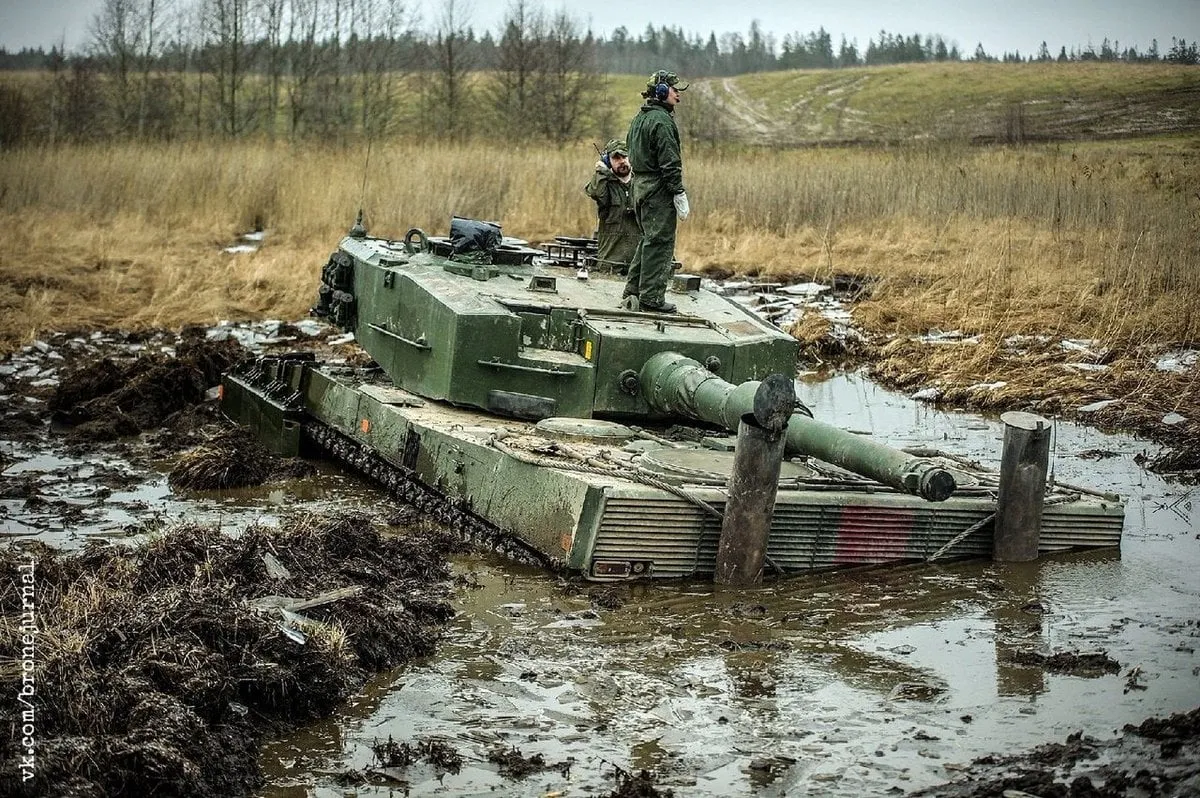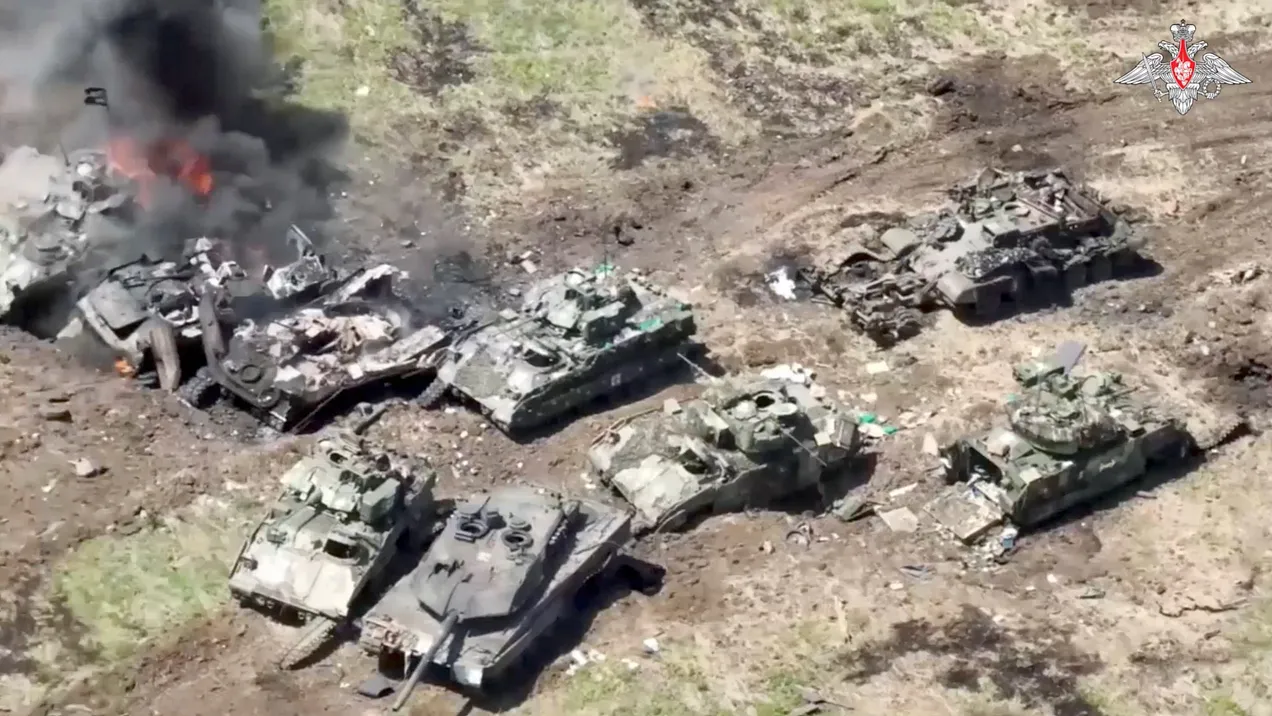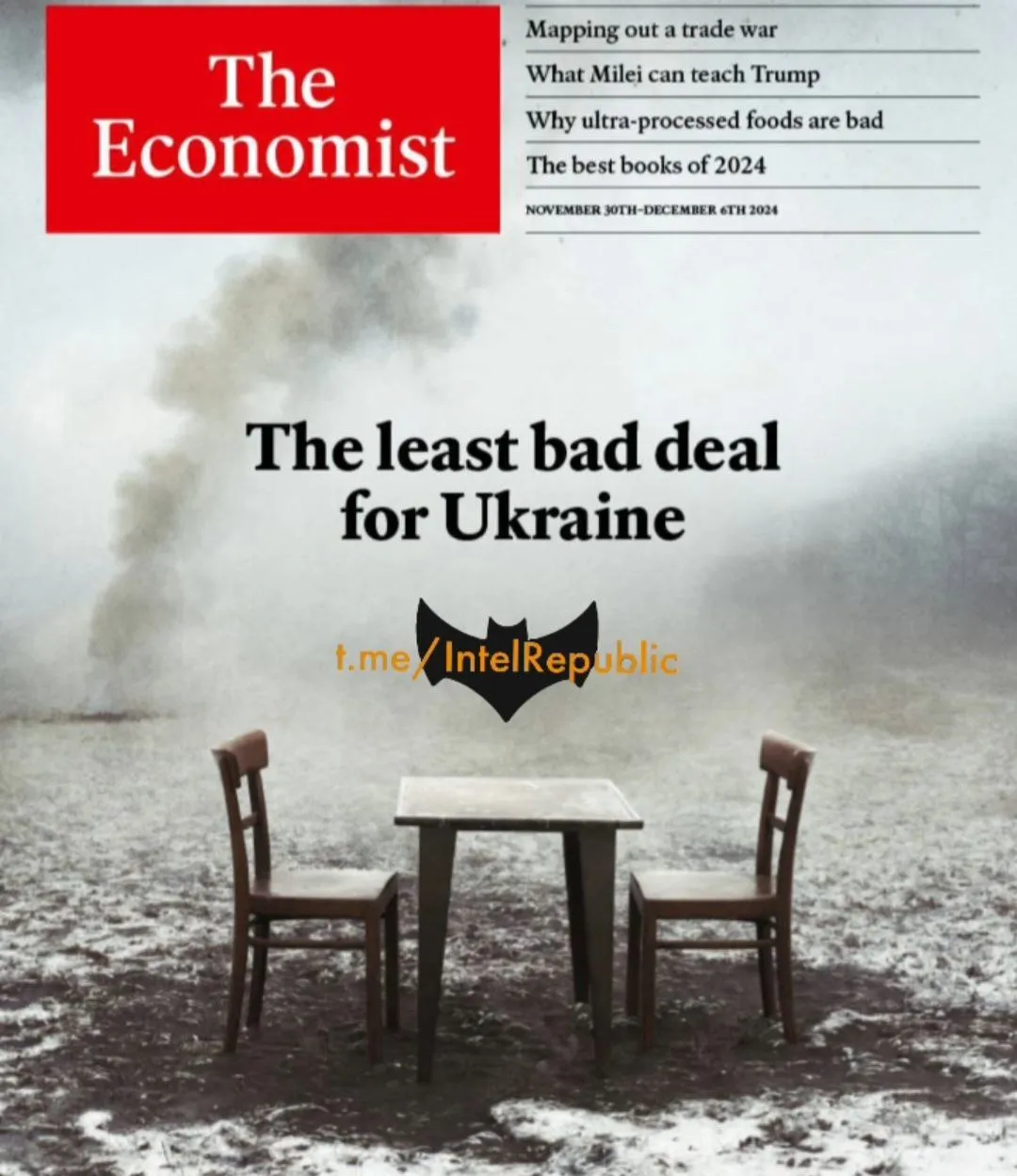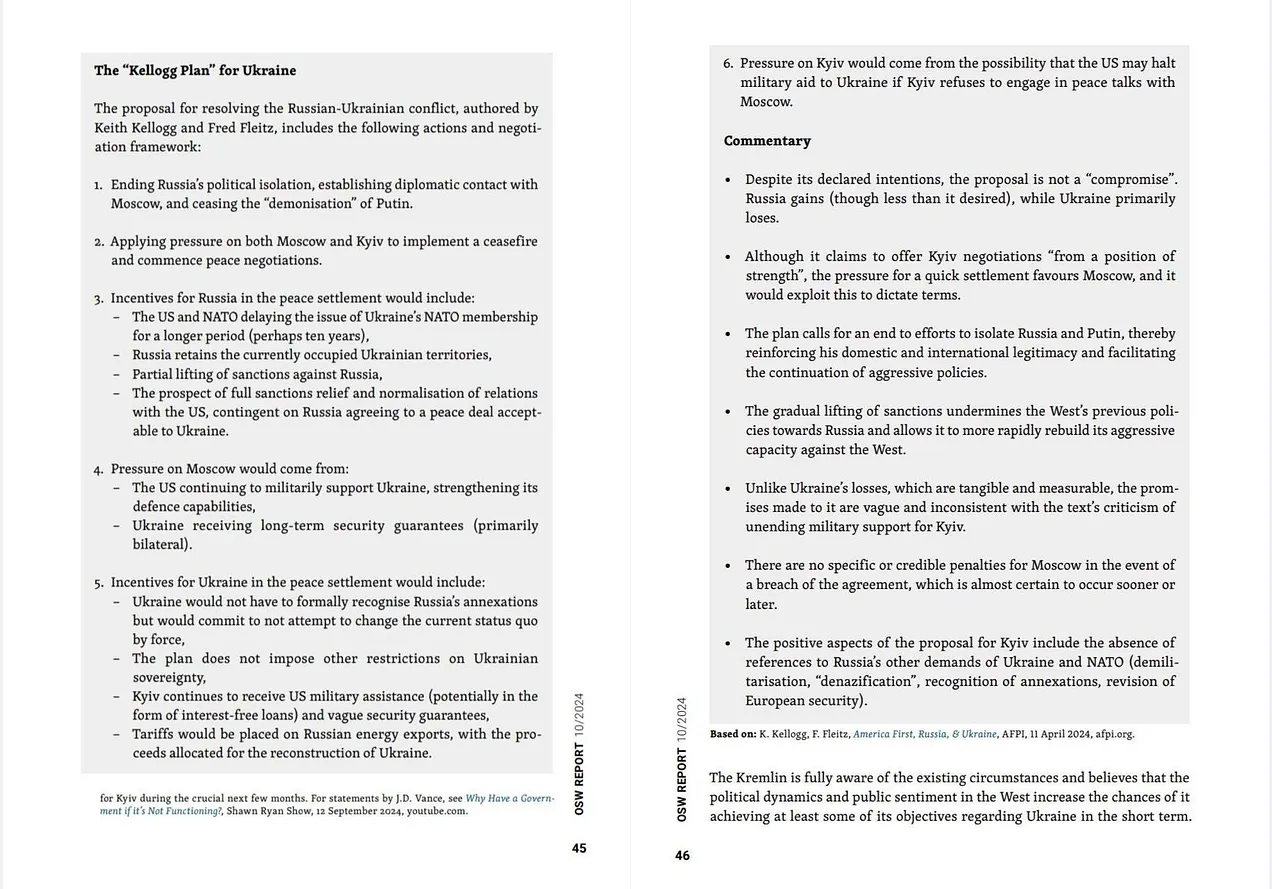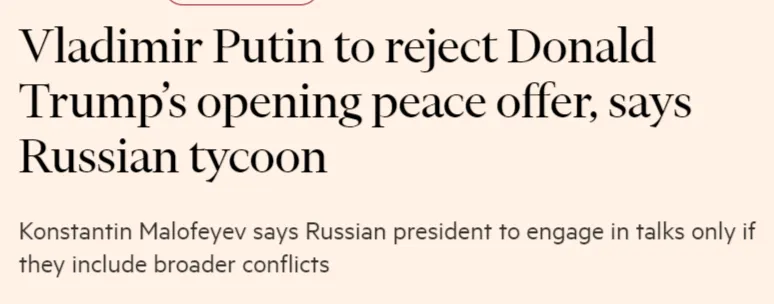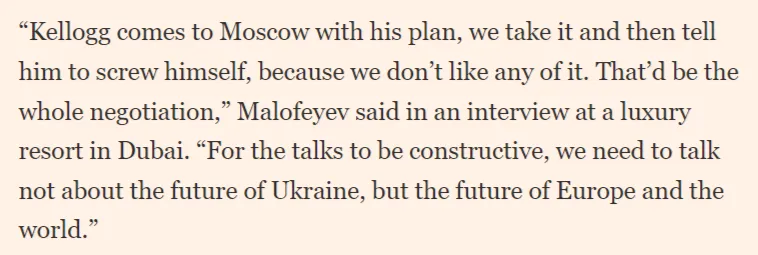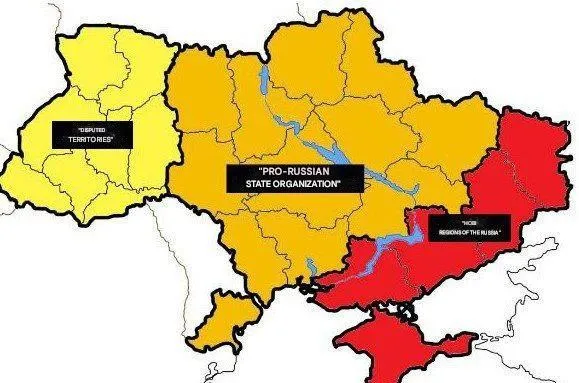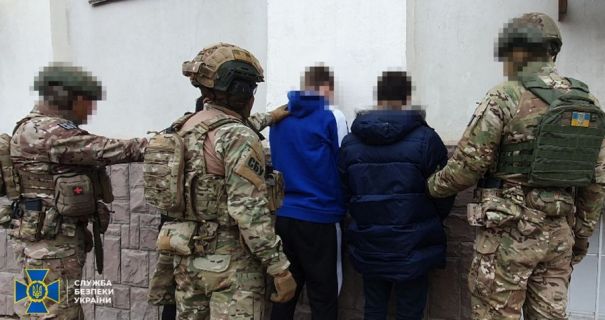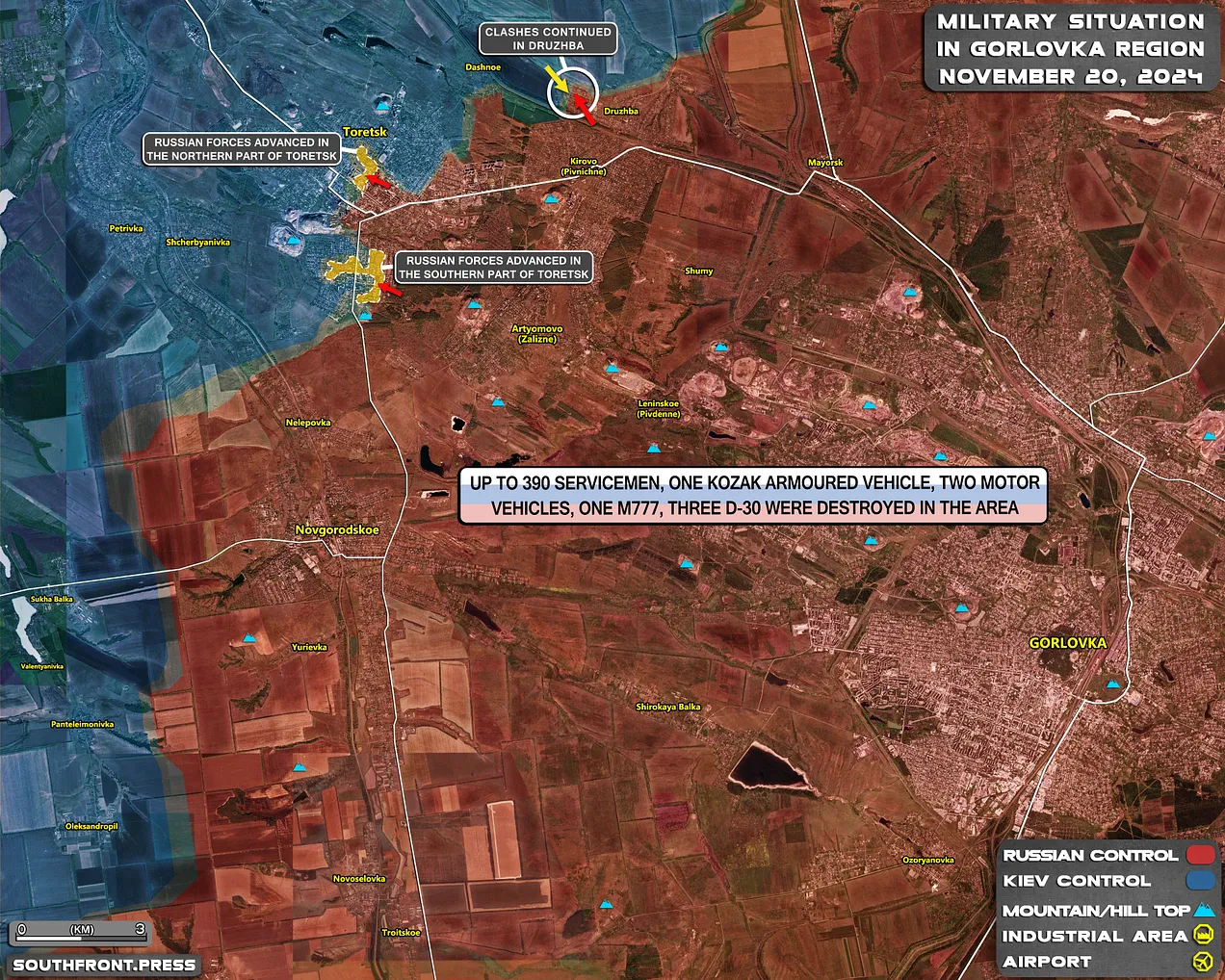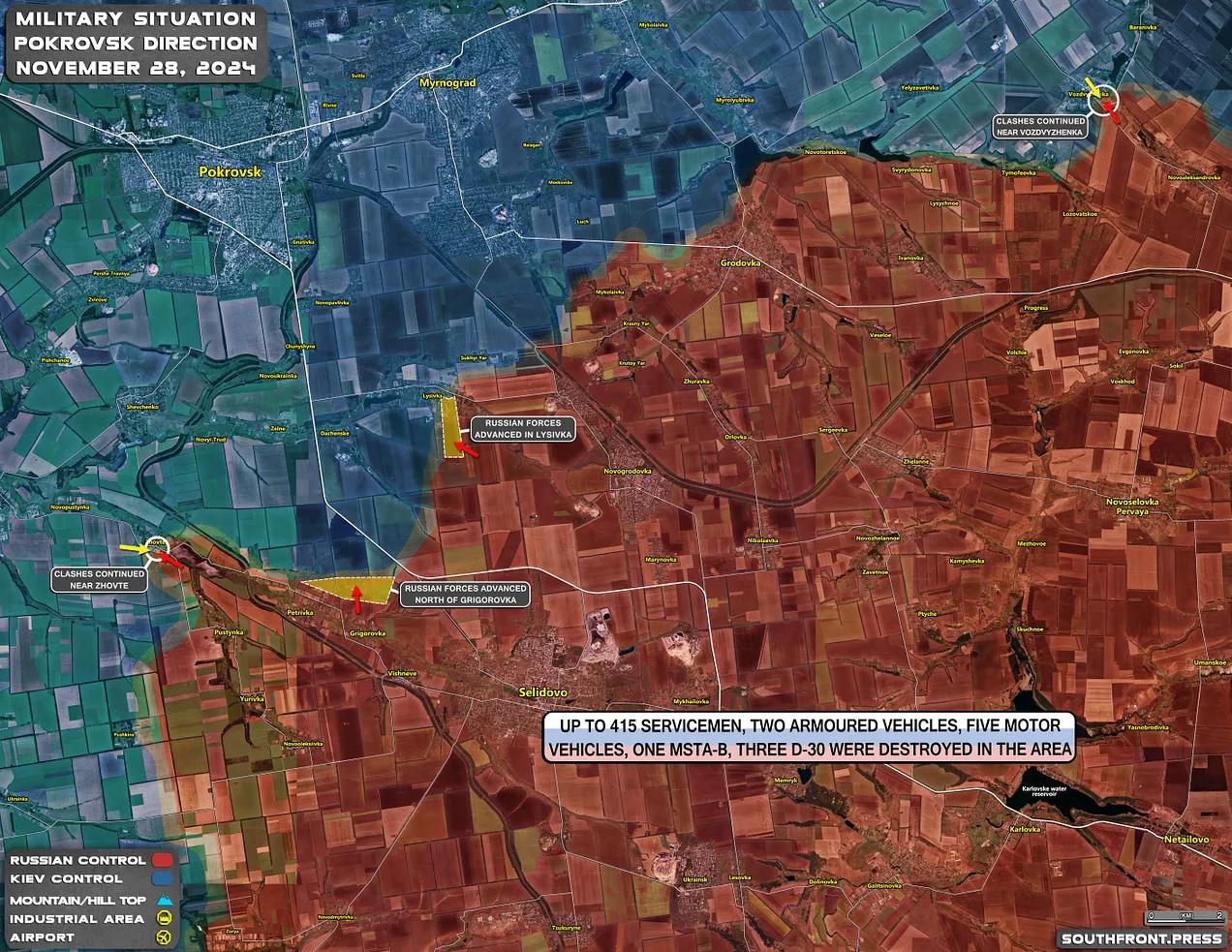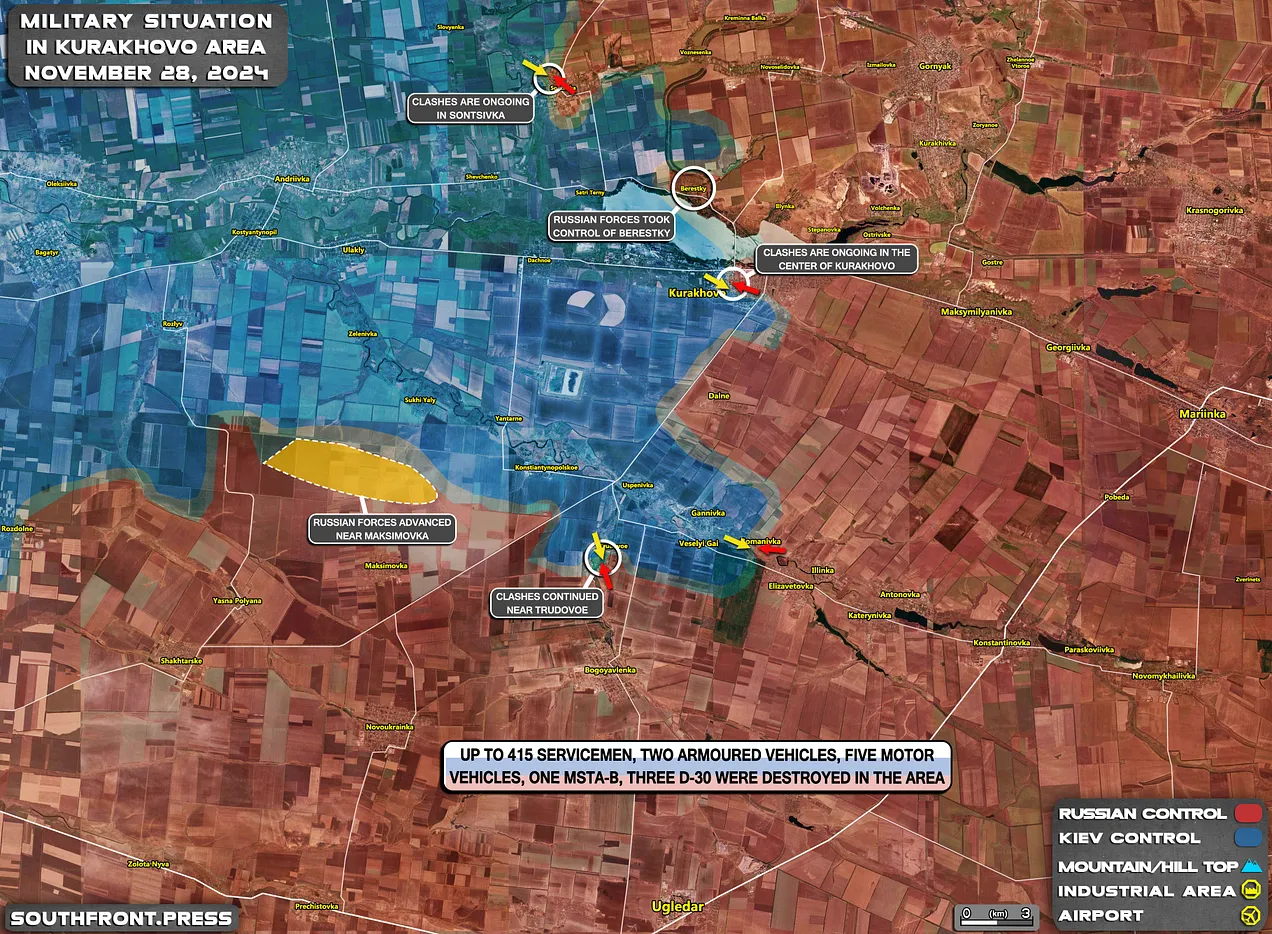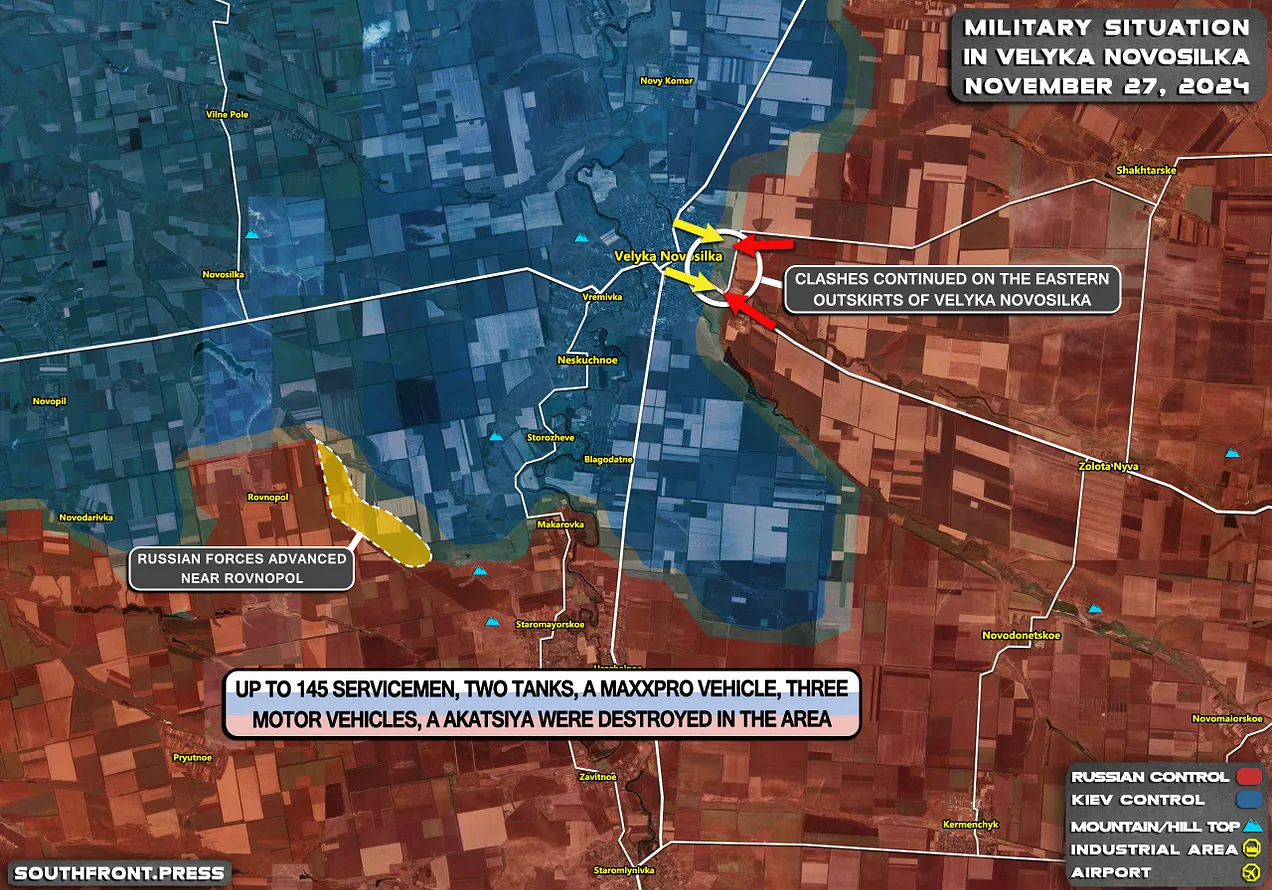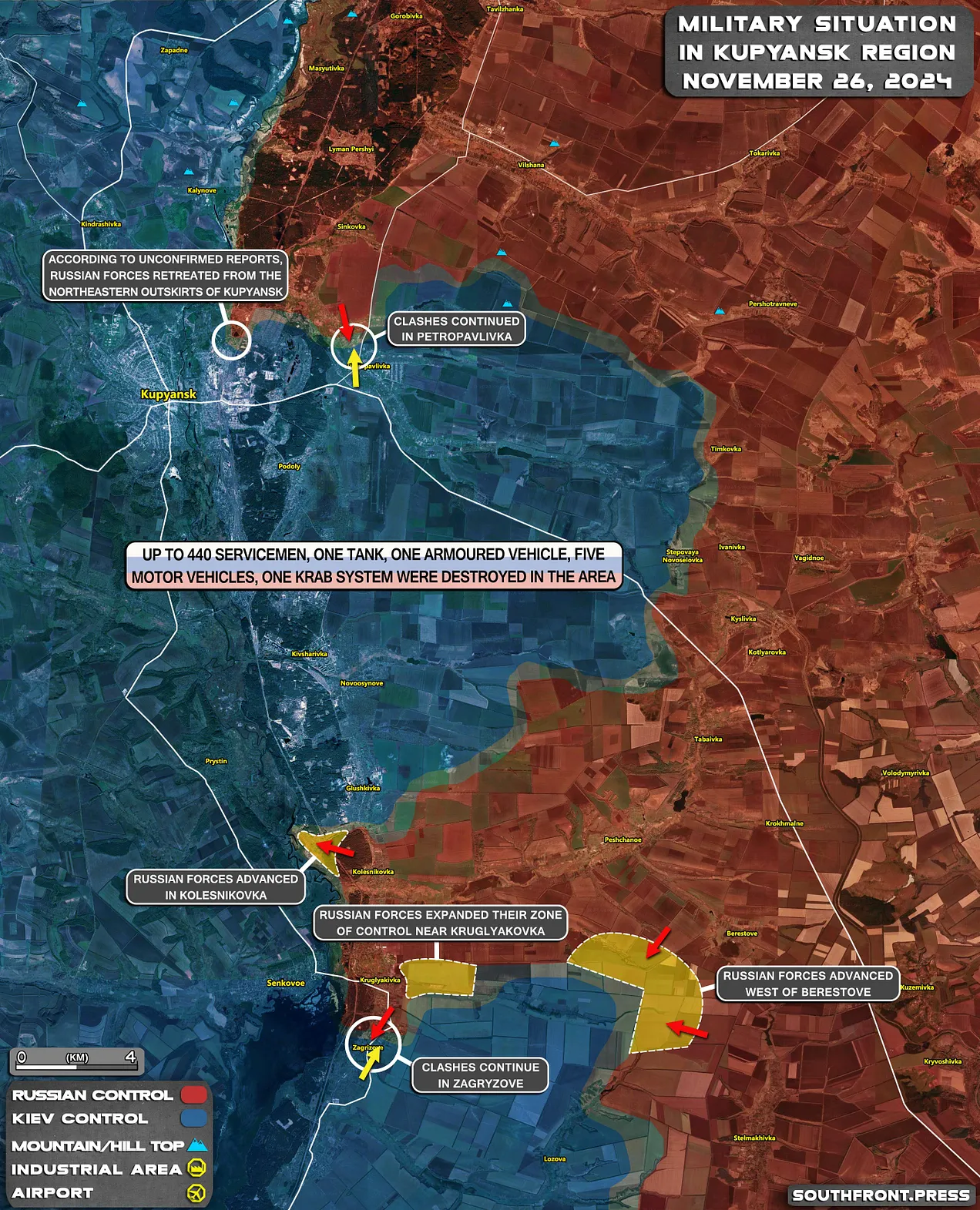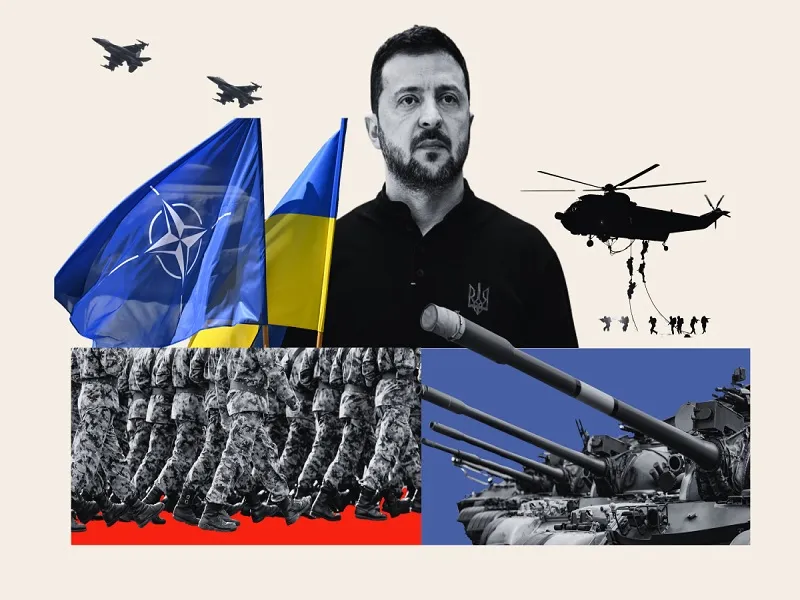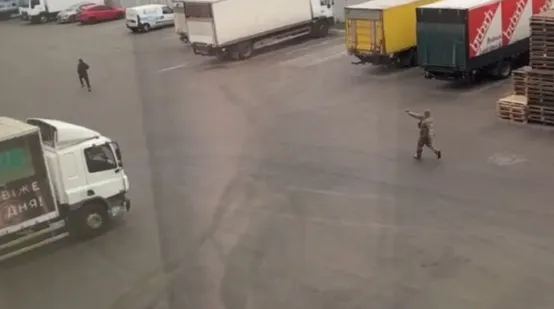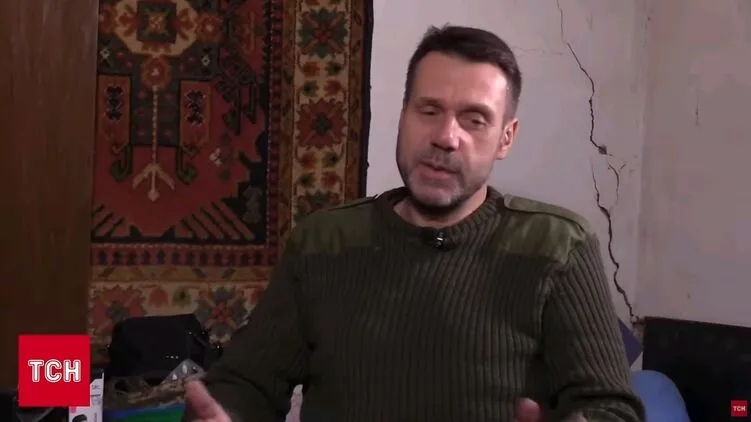Posted by @nsanzo ⋅ 11/29/2024

Completely dependent on the willingness of its allies to continue funding its cause, the Ukrainian government has to always calibrate its words and its increasing demands so as not to offend its main suppliers. Moments of tension in these two and a half years have been few, as the proxy war against Russia is important both to kyiv and to Western capitals, but episodes such as the British minister reminding Zelensky that he should say thank you from time to time have been very resounding. Despite its economic and military vulnerability and the certainty that Ukraine could not continue fighting if it lost the favour of its partners, kyiv, a demanding subordinate, has never moderated its criticism and has tried to stand firm and raise its voice in moments when, usually in an exaggerated way, it has felt aggrieved. However, complaints, suggestions, pleas and lamentations have not gone beyond statements in the press and there has not been so far any issue on which Ukraine and its allies have publicly clashed by displaying opposing views. As a rule, whenever Volodymyr Zelensky felt that the West was making a mistake, the Ukrainian president would resort to subtlety and innuendo to steer the situation back into line.
The current situation is different because of the combination of the current factor – Zelensky no longer needs to flatter the Biden administration, which is already in its last weeks in power – and the military difficulties on the ground. For several days, a confrontation has been brewing between the White House and Bankova over the reason for the current situation. Christopher Miller’s latest article in the Financial Times is a good example of how the rush and the need to quickly find a solution to the problems is leading to the reproaches becoming something more. “Ukraine cannot be expected to pay for delays in logistics or hesitations in support with the youth of our men on the front,” says Dmitro Litvin, communications advisor to the Ukrainian president, in the text.
The comment, much harsher and more explicit than the criticisms that Ukraine had dared to make so far against its main supplier, the United States, has arisen from the information that the Western media have published in the last few hours and which insists on something that Jake Sullivan had already expressed: for the United States, Ukraine's problems are not due to a lack of weapons, but to a question of personnel. "The White House presses Ukraine to mobilize those over 18 years old so that it has enough troops to fight against Russia," was the headline of AP , for example . The news of the American suggestion that Ukraine modify its recruitment law (approved this year and which lowered the age of mobilization from 27 to 25 years old just a few months ago) responds to the growing reproaches from Kiev, which does not understand Joe Biden's permission to attack Russian territory using Western missiles as a sufficient increase in support and expects an increase beyond what is possible and reasonable in the supply of weapons immediately. Like Russia, Ukraine is aware that it must speed up its pace to achieve the greatest possible success in order to place itself in a position of relative strength before the coming to power of Donald Trump, whose approach is to seek a negotiation that, at the very least, freezes the front line. Stronger than in previous years and with a certain superiority in number of troops, Russia is actively working to advance in Donbass and recover what was lost in Kursk, while Ukraine is clinging to those territories under its control in the Russian Federation and is trying to slow down Russian progress in Donetsk and Kharkiv.
In this fight, the role that the Ukrainian government sees for the Biden administration is the immediate supply of huge quantities of weapons and ammunition, something that is not always possible and that clashes with the approach of the White House, which, after having given rise to every miracle weapon narrative, seems to have now understood that no weapon will substantially change the nature of this war. Following Jake Sullivan’s clear words in this regard, on Wednesday John Kirby, spokesman for the US National Security Council, added that his country “is willing to increase training capabilities if they make the appropriate decisions to replenish their ranks.” In other words, the United States is offering to train more troops if Ukraine provides them, which obviously requires an even larger mobilization.
In his recent Resilience Plan , so vague it hasn’t even made headlines, Zelensky claims that conscription must change away from forced mobilisation and towards gentler ways of achieving the numbers of soldiers the country needs at any given time. But as more and more Western media reports show, the reality of forced conscription has long since moved from being a subject condemned as Russian propaganda to being accepted as a fact of daily life. So much so that conscription officers themselves recount their misadventures in outlets such as The Telegraph . “Every morning, Artyom reports for work as one of Ukraine’s feared conscription officers in his hometown somewhere in the war-torn east of the country. After a brief briefing, his team decides where they will go: some are sent to cafes, restaurants, even nightclubs – anywhere where young men of fighting age can be found. “Then the hard work begins,” the British outlet writes, quoting Artyom as saying that “at times, it’s like dealing with cornered rats.” According to the Ukrainian edition of Forbes , cities like Lviv, on the far side of the front, where civilian life has long since returned, are seeing mass restaurant closures. Even in one of the most nationalist and anti-Russian places in the country, the fear of forced conscription is enough to paralyze one of the foundations of the city’s economy.

Ukraine's population pyramid showing the shortage of men in the age groups the United States hopes to mobilize.
Ukraine's personnel difficulties are obvious, and one need only listen to the commanders in the hottest spots on the front, who complain about the low level of recruits, their physical problems and, above all, their scarcity. In an article that provided the data it considered most important in this war, the Financial Times estimated the number of men of recruitment age at 11.1 million, of whom 7.4 million have been recruited, have fled the country or are employed in strategic positions that make them unavailable for mobilisation. The newspaper estimates the pool of men aged between 25 and 60 who can still be recruited for the Armed Forces at 3.7 million. However, Washington's pressure is not to increase the number of troops, but to reduce the recruitment age, a more than questionable solution given the scarcity of this generation.
“The United States has put pressure on Ukraine to lower its military conscription age to 18 to address a severe manpower shortage that has weakened its position on the battlefield and led to Russia’s fastest advance in two years,” writes the Financial Times , adding that a senior US administration official said on Wednesday that “Kiev needed to lower the minimum conscription age from 25 to help Ukraine overcome the crisis.” “The simple truth is that Ukraine is not currently mobilising and training enough soldiers to replace its battlefield losses, keeping pace with Russia’s military build-up.” After two and a half years of claiming that Russian casualties are double or even quadruple those of Ukraine and highlighting Moscow’s military weaknesses, Russia is now too strong for Ukraine to compensate by sacrificing its youngest members, a population so small that it could only solve the problem by decimating itself, thereby compromising the country’s demographic future. So much so that for the moment, Zelensky refuses to comply with the wishes of his suppliers and insists that there should be no speculation on the issue and that “our state is not preparing to lower the age of conscription.” In reality, there is no such speculation, but pure demands from the country that makes it possible for Ukraine to continue fighting. So, if this is Washington’s will, the question is how long it will take Ukraine to accept the demand in exchange for more weapons.
https://slavyangrad.es/2024/11/29/armas-y-personal/
Google Translator
******
From Cassad's telegram account:
Colonelcassad
Summary of the Russian Ministry of Defense on the progress of repelling the attempted invasion of the Ukrainian Armed Forces into the territory of the Russian Federation in the Kursk region (as of November 29, 2024)
— Units of the North group of forces inflicted defeat on formations of the 21st , 41st , 44th and 47th mechanized, 17th heavy mechanized, 5th tank, 80th , 82nd and 95th airborne assault brigades, the 36th marine brigade, as well as the 112th , 116th , 117th and 129th territorial defense brigades of the Ukrainian Armed Forces in the areas of the settlements of Alexandria, Viktorovka, Lebedevka, Leonidovka, Nizhny Klin, Nikolayevo-Daryino, Nikolsky, Novoivanovka, Plekhovo and Sverdlikovo. — Strikes by operational-tactical and army aviation , artillery fire hit enemy manpower and equipment in the areas of the settlements of Bogdanovka, Goncharovka, Guevo, Dar'ino, Kositsa, Kruglen'koye, Kurilovka, Lebedevka, Leonidove, Martynovka, Nizhniy Klin, Nikolayevo-Daryino, Nikolsky, Novaya Sorochina, Novoivanovka, Plekhovo, Sverdlikovo, Cherkasskoye Porechnoye, as well as Basovka, Belovody, Vodolaghi, Zhuravka, Loknya, Malaya Rybitsa and Pavlovka in the Sumy region. Over the past 24 hours, the Ukrainian Armed Forces have lost more than 340 servicemen. An armored personnel carrier, an armored combat vehicle, as well as 12 cars, an artillery piece and six mortars have been destroyed . — In total, during the military operations in the Kursk direction, the enemy lost more than 36,600 servicemen, 223 tanks, 158 infantry fighting vehicles, 123 armored personnel carriers, 1,201 armored combat vehicles, 1,056 cars, 305 artillery pieces, 40 multiple launch rocket system launchers, including 11 HIMARS and six MLRS made in the USA, 13 anti-aircraft missile system launchers, seven transport and loading vehicles, 70 electronic warfare stations, 13 counter-battery radars, four air defense radars, 27 units of engineering and other equipment, including 13 engineering obstacle clearance vehicles, one mine clearing unit
***
Colonelcassad
Summary of the Ministry of Defence of the Russian Federation on the progress of the special military operation (from 23 to 29 November 2024)
— From 23 to 29 November, the Armed Forces of the Russian Federation carried out a massive and 32 group strikes with high-precision air, sea, land-based weapons and strike unmanned aerial vehicles on energy facilities, the military-industrial complex of Ukraine, industrial enterprises, deployment sites of the Armed Forces of Ukraine, foreign instructors and mercenaries. Two launchers with Grom-2 ballistic missiles, as well as a launcher and a transport and loading vehicle of the Ukrainian anti-ship complex Neptune were destroyed. The goals of the high-precision strikes were achieved.
— Units of the North group of forces continued to destroy the Armed Forces of Ukraine in the Kursk region. Air and artillery strikes damaged the manpower and equipment of two tank, five mechanized, two airborne assault brigades of the Ukrainian Armed Forces, a marine brigade and four territorial defense brigades. The enemy's losses amounted to 2,420 servicemen, 10 tanks, 32 combat armored vehicles, 105 cars, three HIMARS and two MLRS units made in the USA, 20 field artillery guns.
— Units of the "West" force group liberated the village of Kopanki in the Kharkiv region, defeated the manpower and equipment of five mechanized, an airborne brigades of the Ukrainian Armed Forces, a marine brigade, two territorial defense brigades and a national guard brigade, repelled 28 counterattacks by assault groups of the Ukrainian Armed Forces. The enemy lost over 3,150 servicemen, two tanks, 13 armored combat vehicles, 28 vehicles, 18 field artillery pieces, including six Western-made 155mm howitzers. Ten electronic warfare stations and 21 field ammunition depots were destroyed.
— Units of the Southern Group of Forces occupied advantageous lines and positions, defeated formations of four mechanized, motorized infantry, mountain assault, two airmobile, airborne assault brigades of the Ukrainian Armed Forces, a marine brigade and a territorial defense brigade, and repelled eight counterattacks of the Ukrainian Armed Forces. The enemy lost over 2,790 servicemen, five armored combat vehicles, 19 vehicles, 10 field artillery pieces, and eight field ammunition depots.
— Units of the Center group of forces liberated the settlements of Novaya Ilyinka and Vorovskoye of the Donetsk People's Republic, defeated the manpower and equipment of seven mechanized, infantry, two ranger brigades of the Ukrainian Armed Forces, a marine brigade, three territorial defense brigades and a national guard brigade, repelled 53 enemy counterattacks.
— Units of the "East" force group liberated the settlement of Razdolnoye of the Donetsk People's Republic, destroyed two mechanized, mountain assault, artillery brigades of the Armed Forces of Ukraine, six territorial defense brigades. The enemy lost up to 960 servicemen, six tanks, four combat armored vehicles, 25 cars, 14 field artillery guns.
— Units of the "Dnepr" force group inflicted losses on the manpower and equipment of two mechanized, infantry brigades of the Armed Forces of Ukraine, four territorial defense brigades and a national guard brigade. The Armed Forces of Ukraine lost up to 390 servicemen, 23 cars, five field artillery guns.
***
Colonelcassad
THE TERRITORIES OF UKRAINE FOR DE FACTUAL OCCUPATION ARE PLANNED TO BE DIVIDED BETWEEN ROMANIA, POLAND, AND GERMANY. NATO IS INCREASINGLY TILTING TOWARDS THE NEED TO FREEZE THE UKRAINIAN CONFLICT
1. NATO is already setting up training centers in Ukraine, through which it is planned to drag at least a million mobilized Ukrainians
2. The West, in order to solve its problems, will go for the de facto occupation of Ukraine under the guise of deploying peacekeepers.
3. The West plans to introduce 100,000 so-called peacekeepers into Ukraine.
https://t.me/s/boris_rozhin
Google Translator
******
Ukraine’s Leaders Discuss Continued War Against Russia & Plans for Transforming Country into Western Colony
November 27, 2024

Collage showing Volodymyr Zelensky between Donald Trump and Joe Biden, with war and destruction in the background. Illustration: Zeinab al-Hajj/Al Mayadeen English.
By Dmitri Kovalevich – Nov 25, 2024
After Donald Trump’s election victory on November 5, the Ukrainian authorities and media are visibly concerned about a possible change of policy in Washington. During the recent presidential and Congress elections, US media close to the Democratic Party were full of scare stories that Trump and the Republican Party, if elected, would force Ukraine into negotiations and concessions with the Russian Federation.
The unelected, governing regime in Kiev is entirely dependent on Western powers for arms to pursue the war against Russia and for loans and investments to keep its economy afloat. For the regime, a ceasefire would likely prompt reductions in military and economic aid not only from the US but also from the European Union, Japan, South Korea (US$394 million for 2024), and other US satellites. It also means that public relations need to hold presidential and legislative elections and lift some of its harsh restrictions, including the ongoing ban against men traveling abroad.
A ceasefire would also mean an end to the vast corruption schemes surrounding the country’s obligatory military conscription. During the past two and a half years, bribes to avoid conscription have made millionaires of military enlistment officers and doctors who have the power to write exemptions.
The conflict in Ukraine is enriching arms manufacturers to an unthinkable degree, driving the prices of munitions to record levels. Ukrainian military expert Valentin Badrak stated at the VIA Carpatia 2024 forum in mid-November, “Russian ammunition cost $600 in 2022, and it still costs $600 today. Putin put down his foot and everything is produced as before, no one raises prices. European ammunition, meanwhile, which cost US $850 at the beginning of 2024 now costs $8,500.”
“VIA Carpathia” is a road transport improvement scheme by European Union countries in central Europe to improve road countries in Turkiye, the Caucasus region of southeast Europe, and elsewhere in western Asia.
Badrak added that the dream project of Ukraine’s leaders to build their own rocket system with a range of 1,500 km will require a lot of financial resources, which the United States could help provide.
Zelensky told an interview with Suspilne Ukraine (national state broadcaster) on November 16 that he expects the new administration in Washington to wind down the war against Russia, but he doesn’t know when and how. “The change occurring in US policy indicates that the war will end, but I don’t know how. Our task is not to give any opportunity to pressure or induce us into making concessions.”
“Talks with Russia are only possible if we are not alone at the table and provided that Ukraine is strong,” he said.
In the same interview, he affirmed that his regime will make its own decisions on any talks with Russia. Using words stretching credibility, he said, “We are an independent country. During this war, both our people and I personally, in negotiations with the United States, with Trump, Biden, and European leaders, have proven that the rhetoric of ‘sit and listen’ does not work with us.”
US billionaire Elon Musk responded to this by saying that Zelensky has an “amazing sense of humor,” stressing that Ukraine’s independence is fictitious. Commenting on Musk’s words, former Ukrainian legislator Igor Mosiychuk stated, “Musk unfortunately emphasized the obvious… For 33 years, our pseudo-elite has been running between Moscow and Washington, then to Brussels, Beijing, and even Istanbul looking for new masters and selling off state sovereignty at wholesale and retail prices.”
Zelensky is clearly nervous and even criticized Olaf Scholz for his recent conference call with Vladimir Putin. He said the German Chancellor is opening a ‘Pandora’s box’ by talking to his Russian counterpart, though, based on Berlin’s official statement, Scholz did not say anything new to Putin. He repeated earlier calls for negotiations with Ukraine to “conclude a just peace” and for Russia to withdraw its troops from territories that the Ukraine regime continues to call its own.
Canada’s Prime Minister Justin Trudeau has also voiced concern about possible aid cuts under a new Trump-led administration. “Let’s be very blunt: all the allies in the world would not be able to replace a complete withdrawal by the United States of support to Ukraine.” So far, the total amount of all funds allocated by the US Congress to assist Ukraine since the start of Russia’s special military operation has exceeded $182 billion.
This is prompting the Kiev authorities to find ways to scare everyone with peace. Former Ukrainian Foreign Minister Dmytro Kuleba warned on November 13 that a military revolt in Ukraine would ensue if the Trump administration were to agree to a peace deal with Russia on terms considered unfavorable. “If the Trump administration were to impose unpalatable peace terms on Ukraine and if Mr Zelensky were to agree (an unlikely scenario), part of Ukrainian society would resist. Domestic unrest would risk the country’s internal collapse. That would give Mr. Putin the victory he has long desired, painting Ukraine as a failed state. Responsibility for this would fall squarely on Mr Trump. But he cannot allow Ukraine to become his ‘Afghanistan,'” wrote Kuleba, referring to the humiliating defeat and withdrawal of the US and NATO military forces from Afghanistan culminating in August 2021.
It should be noted that in the 21st century, all “color revolutions” and nationalist revolts against agreements or alliances with Russia, notably in Ukraine and Georgia, have been inspired and supported by Western powers. The people of Moldova most recently and Kyrgyzstan (Kyrgyz Republic) before have come under Western efforts to disrupt and break historic ties with Russia and the Russian Federation.
Complicating the position of the Ukraine regime and its Western backers is the fact that Ukraine’s military now consists of a great many forcibly conscripted soldiers. Those who have survived into the third year of war regularly warn through social media of excessive fatigue from life in the trenches with little or no rest, in addition to a host of other problems, including poor training and inadequate weapons.
Ukrainian political scientist Kost Bondarenko explains why many in the West fear peace in Ukraine. As reported by Politnavigator on Telegram on November 14, he said, “In the eyes and ears of Western leaders, the word ‘peace’ means ‘surrender.’ The West believes that if the goal of internal ‘revolution’ in Russia is not achieved, that is, no collapse of the government led by Vladimir Putin occurs, that would mean billions of dollars of military hardware will have been thrown away for nothing.”
“This will then turn very soon into extreme problems for the leaders of the European Union, unlike what will happen in Russia… Military hawks in Europe are afraid of peace because for them, peace would mean an acknowledgment of their own defeat.”
Ukrainian legislator Oleksandr Dubinsky also emphasizes that the end of Zelensky’s power means the beginning of the audit of American military aid, which stands as a threat to the reputation of the “Dems.” “Trump’s goal is to show the deep corruption of the Democrats in the war in Ukraine. And Zelensky can participate in this either as their accomplice or as a ‘whistleblower,'” Dubinsky believes. But for now, Zelensky’s task, according to the lawmaker, is to prevent the war from ending in the next two years and to prevent the auditing of aid sent to Ukraine. Where has all the money gone?
At a recent meeting with French President Emmanuel Macron, the newly appointed secretary-general of NATO, former Dutch prime minister Mark Rutte, spoke in favor of continued war on Ukraine territory. “We must recommit to stay the course of the war, and we must do more than just keep Ukraine in the fight,” he said.
Nuclear blackmail rears its head once again
In mid-November, the UK daily Times published a report (as cited on Telegram by the Ukraine online news outlet Strana on November 13) that Ukraine could well embark on developing an elementary nuclear bomb within a few months should the new US administration reduce its military aid to Ukraine. Immediately after the report appeared in The Times, the Ukrainian Foreign Ministry issued a statement denying that such plans exist.
This is not the first time that such a dark suggestion has been aired. Usually, governments and their militaries keep quite silent about such ideas. If they do act upon them, they do so quietly. The editors of Strana explain that the proposal was prepared for the Ukrainian Defense Ministry’s purview but got into the hands of the British media without Kiev’s knowledge. The Times report then writes threatening words, saying the news “should serve as a wake-up call to members of the Trump administration, who see Ukraine as a pawn that can be sacrificed as part of a larger game.”
Strana wrote a lengthy message on Telegram two days later, saying, “The topic of a Ukraine-produced nuclear bomb is probably a message to Western allies, primarily to the Americans, that aid to Ukraine cannot be cut, just as Kiev cannot be forced to end the war on the front lines without first achieving a promise of NATO membership.” But Strana says it doubts the claims of the Ukraine regime that it can produce nuclear weapons (as opposed to crude ‘dirty bombs’ loaded with nuclear waste), which is also the explanation by many nuclear science experts in Russia. Strana warns that “threatening what you do not have is far from the most winning strategy.”
Former Ukrainian legislator and far-right nationalist Igor Mosiychuk doesn’t understand these nuclear threats. He wrote on Telegram on November 17, “Why are our military-political leadership and various talking heads in the Office of the President talking everywhere about Ukraine making a nuclear bomb? To do what? To provoke the Russians to strike not only at our energy infrastructure but to also use nuclear arms? Some people, after the election of Trump, want to continue the war and make a lame duck out of Trump should he talk peace. Such people do not care about the lives of Ukrainians!”
A neocolonial Ukraine?
Valeriy Zaluzhny, the ex-chief of staff of the Ukrainain military and today the Ukrainian ambassador to Britain, is suggesting that the UK government and its agencies take over the training and education of a new elite and future managers for Ukraine. Speaking to the annual general meeting of the European Business Association in Kiev on November 13, he said, “We have almost managed to convince the British establishment that the best, let us say, guarantee for their future investment in our country is to invest in its education, that is, to invest in the training of our future ministers, prime ministers, governors—even the future president.”
Zaluzhny’s words caused a storm of outrage among Ukrainian politicians. Legislator and former member of Zelensky’s party Oleksandr Dubinsky wrote ironically on Telegram on November 14, “Zaluzhny is the best. Asking the ‘white masters’ to prepare overseers and planters for us (and who else is needed to run a great agrarian power) in the best institutions in London is strong. Zaluzhny is a good guy, asking the ‘white master’ to prepare for us a future role as overseers and planters, in the best traditions of Britain and its former empire. Who else is needed to manage a large agrarian state but such people? It’s quite the proposal; not to train and prepare future presidents, but to train the supervisors of a labor colony.”
Ukrainian political scientist Vadym Karasev is extremely indignant at such a blatant proposal for the colonization of Ukraine: “The ex-chief of the armed forces Zaluzhny is suggesting that every year, five to seven thousand future managers be sent for training in the UK so they may ‘grow up.’ The British have long trained the managers of colonies, it is their specialty. But does Ukraine not have its own universities? This a proposal for the training of hand-picked bureaucrats to take over and manage the country.”
Karasev also recalls that Kiev regime president Volodymyr Zelensky has proposed a “victory plan” for Ukraine’s war against Russia that would gift American corporations access to Ukraine’s rich deposits of minerals. It would thus turn out that all the fighting by Ukrainian soldiers would have been done in the interests of certain US corporations. Karasev calls Zelensky’s ‘victory plan’ a proposal for “voluntary colonization.”
Ukrainian economist Oleksiy Kushch calls Zaluzhny’s musings a case of “intellectual neo-colonialism.” In a lengthy message on Telegram on November 13, he emphasizes that intellectual neocolonialism in Ukraine has so far brought only a colossal waste of the financial and geopolitical resources delivered by the West.
In a lengthy follow-up message, Kusch warns against taking the Western leaders for fools. “The West’s project in Ukraine stems from the fact that Ukraine is the only possible, remaining geopolitical platform to influence and incite the people of the Russian Federation to launch a pro-Western geopolitical project for Russia. All attempts to launch such a project from inside the country have failed,” he writes.
Kusch emphasizes that the West does not need Ukrainian resources or its living space. These are only of interest to the West as helpful in seeking to pressure and influence Russia. This is the final goal and the final stop. “I remember how during the time of President Kuchma in Ukraine [1994 to 2005], his administration launched the ‘Academy of Public Administration’ project. Its goal was to train the future personnel of our state. Today, we are witness to the total failure of this project. Now, a country Ukraine with well-established science and centuries-old universities is asking a foreign partner to prepare our future administrators. The argument is that ‘this is the best guarantee for investments you (the West) make in our future.’ Again, this is intellectual neocolonialism.”
He continues, “Fighting Russian imperialism [sic] in order to replace it with British neocolonialism is clearly not the strategy that can ensure the development of Ukraine and the survival of the Ukrainian nation in the 21st century.”
To achieve such “development goals,” according to the minds of their proponents, the war in Ukraine must continue. Various options will be used to disrupt any ceasefire and negotiations—from nuclear blackmail to assassinations. For the entire Western elite and the Ukrainian compradors tied to it, beginning with Zelensky and Zaluzhny, what is at stake is what they call a “rules-based international order.” But there is nothing new here: such “rules” date back to the days of British colonizers marauding across Africa, India, Asia, and beyond.
https://orinocotribune.com/ukraines-lea ... rn-colony/
******
Britain’s Kursk Invasion Backfires
Posted by Internationalist 360° on November 24, 2024
Kit Klarenberg
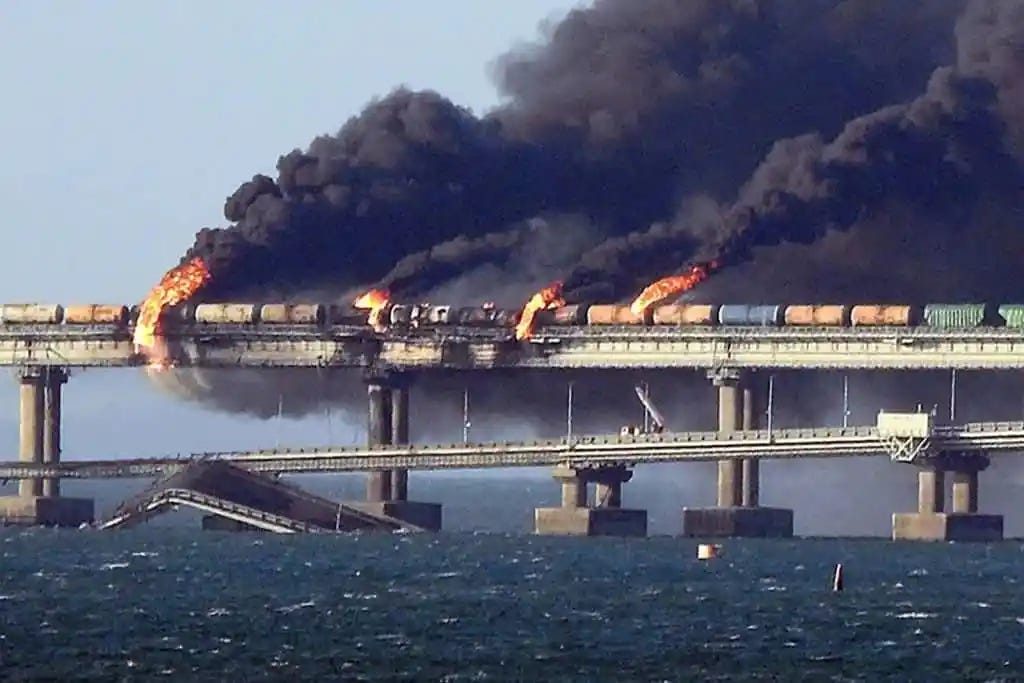
Kerch Bridge in flames following its British-planned bombing
British Challenger 2 tanks reached Ukraine with enormous fanfare, ahead of Kiev’s long-delayed, ultimately catastrophic 2023 “counteroffensive”. On top of encouraging other proxy war sponsors to provide Ukraine with armoured fighting vehicles, Western audiences were widely told the tank – hitherto marketed to international buyers as “indestructible” – made Kiev’s ultimate victory a fait accompli. As it was, Challenger 2 tanks deployed to Robotnye in September were almost instantly incinerated by Russian fire, then very quietly withdrawn from combat altogether.
Hence, many online commentators were surprised when footage of the Challenger 2 in action in Kursk began to circulate widely on August 13th. Furthermore, numerous mainstream outlets dramatically drew attention to the tank’s deployment. Several were explicitly briefed by British military sources that it marked the first time in history London’s tanks “have been used in combat on Russian territory.” Disquietingly, The Times now reveals this was a deliberate propaganda and lobbying strategy, spearheaded by Prime Minister Keir Starmer.
Prior to the Challenger 2’s presence in Kursk breaking, Starmer and Defence Secretary John Healey had reportedly “been in talks about how far to go to confirm growing British involvement in the incursion towards Kursk.” Ultimately, they decided “to be more open about Britain’s role in a bid to persuade key allies to do more to help – and convince the public that Britain’s security and economic prosperity is affected by events on the fields of Ukraine.” A “senior Whitehall source” added:
“There won’t be shying away from the idea of British weapons being used in Russia as part of Ukraine’s defence. We don’t want any uncertainty or nervousness over Britain’s support at this critical moment and a half-hearted or uncertain response might have indicated that.”
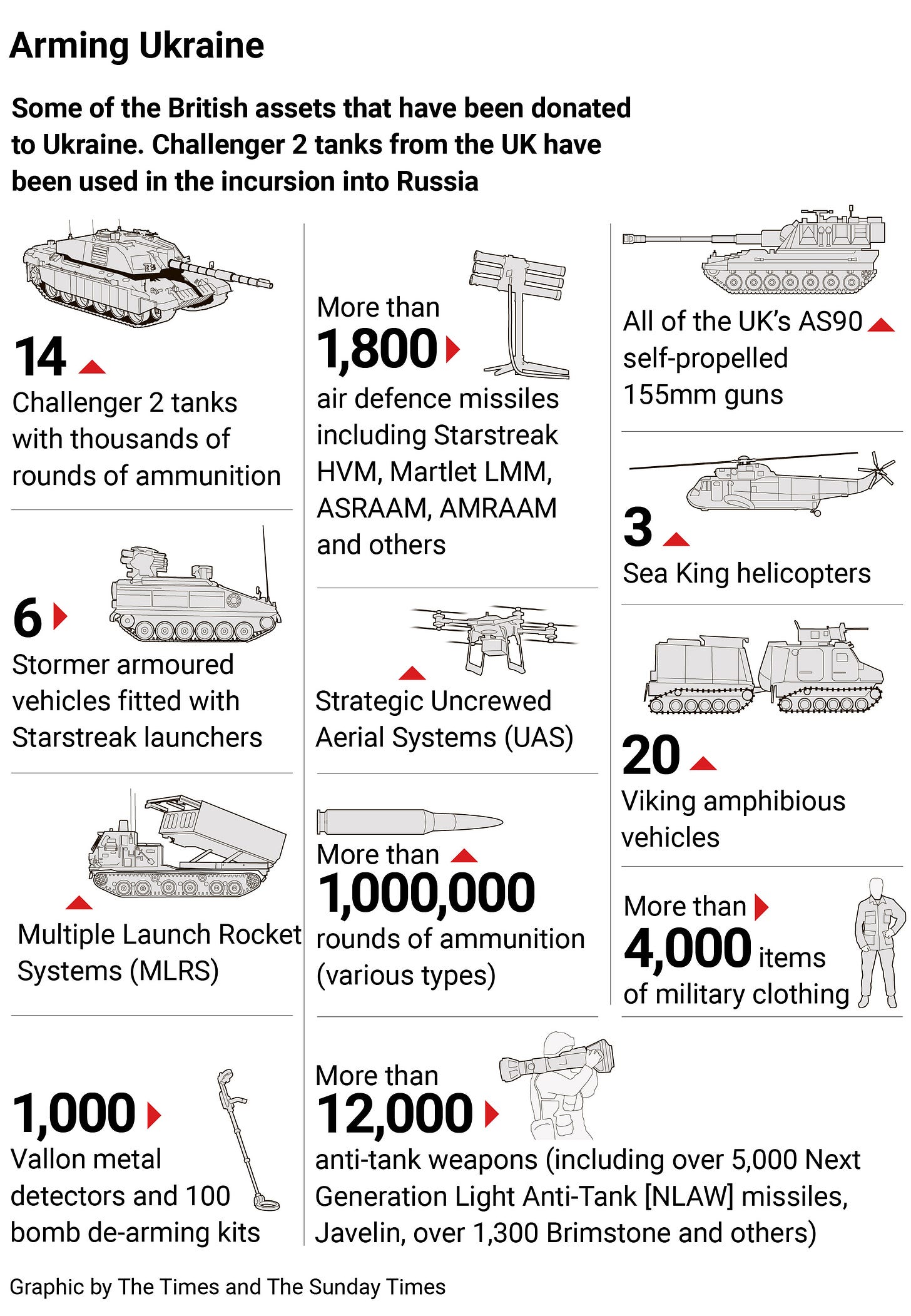
In other words, London is taking the lead in marking itself out as a formal belligerent in the proxy war, in the hope other Western countries – particularly the US – will follow suit. What’s more, The Times strongly hints that Kursk is to all intents and purposes a British invasion. The outlet records:
“Unseen by the world, British equipment, including drones, have played a central role in Ukraine’s new offensive and British personnel have been closely advising the Ukrainian military…on a scale matched by no other country.”
Britain’s grand plans don’t stop there. Healey and Foreign Secretary David Lammy “have set up a joint Ukraine unit,” divided between the Foreign Office and Ministry of Defence. The pair “held a joint briefing, with officials, for a cross-party group of 60 MPs on Ukraine,” while “Starmer has also asked the National Security Council to draw up plans to provide Ukraine with a broader range of support.” On top of military assistance, “industrial, economic, and diplomatic support” are also being explored.
The Times adds that in coming weeks,
“Healey will attend a new meeting of the Ukraine Defence Coordination Group,” an international alliance of 57 countries overseeing the Western weaponry flooding into Kiev. There, “Britain will press European allies to send more equipment and give Kyiv more leeway to use them in Russia.” The British Defence Ministry also reportedly “spoke last week to Lloyd Austin, the US defence secretary, and has been wooing Boris Pistorius, his German opposite number.”
Evidently, the new Labour government has an ambitious vision for the proxy war’s continuation. Yet, if the “counterinvasion” is anything to go by, it’s already dead in the water. As The Times notes, the imbroglio is primarily “designed to boost morale at home and shore up Zelensky’s position,” while relieving pressure on the collapsing Donbass frontline by forcing Russia to redirect forces to Kursk. Instead, Moscow “has capitalised on the absence of four crack Ukrainian regiments to press their attacks around Pokrovsk and Chasiv Yar.”
Similarly, commenting on Starmer’s wideranging efforts to compel overt Western action against Russia, a “defence expert” told The Times: “if it looks as if the Brits [are] too far ahead of their NATO allies, it might be counterproductive.” This analysis is prescient, for there are ample indications London’s latest attempt to ratchet tensions and drag the US and Europe ever-deeper into the proxy war quagmire has already been highly “counterproductive”, and boomeranged quite spectacularly. Indeed, it appears Washington has finally had enough of London’s escalatory connivances.
In repeated press conferences and media briefings since August 6th, US officials have firmly distanced themselves from the Kursk incursion, denying any involvement in its planning or execution, or even being forewarned by Kiev. Empire house journal Foreign Policy has reported that Ukraine’s swoop caught the Pentagon, State Department, and White House off-guard. The Biden administration is purportedly not only enormously unhappy “to have been kept out of the loop,” but “skeptical of the military logic” behind the “counterinvasion”.
On top being a clear suicide mission, the eagerly advertised presence of Western weapons and vehicles on Russian soil “has put the Biden administration in an extremely awkward position.” Washington has since the proxy war erupted been wary of provoking retaliations against Western countries and their overseas assets, and the conflict spilling outside Ukraine’s borders. Adding to US irritations, the British-directed Kursk misadventure also torpedoed ongoing efforts to secure an agreement to halt “strikes on energy and power infrastructure on both sides.”
This comes as Kiev prepares for a harrowing winter without heat or light, due to devastating Russian attacks on its national energy grid. Putin has moreover made clear that Ukrainian actions in Kursk mean there is no longer scope for a wider negotiated settlement at all. Which is to say Moscow will now only accept unconditional surrender. The US has also seemingly changed course as a result of the “counterinvasion”.
On August 16th, it was reported that Washington had prohibited Ukraine’s use of British-made, long-range Storm Shadow missiles against Russian territory. Given securing wider Western acquiescence to such strikes is, per The Times, a core objective for Starmer, this can only be considered a harsh rebuke, before the Labour government’s escalatory lobbying efforts have even properly taken off. The Biden administration had in May granted permission for Kiev to conduct limited strikes in Russia, using guided munitions up to a 40-mile range.
Even that mild authorisation may be rescinded in due course. Berlin, which like Britain had initially proudly promoted the presence of its tanks in Kursk, is now decisively shifting away from the proxy war. On August 17th, German Finance Minister Christian Lindner announced a halt to any and all new military aid to Ukraine as part of a wider bid to slash federal government spending. The Wall Street Journal reporting three days earlier that Kiev was responsible for Nord Stream II’s destruction may be no coincidence.
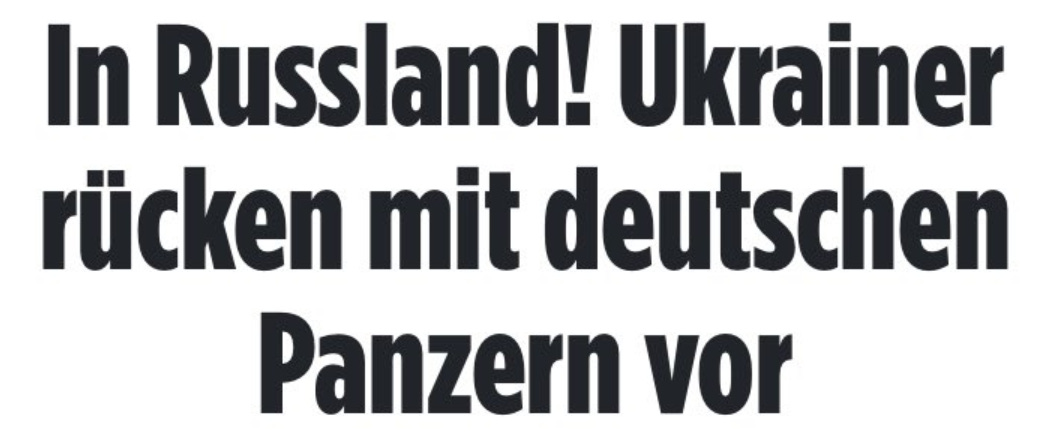
Germany’s Bild newspaper: “In Russia, Ukraine advances with German tanks!”
The narrative of the Russo-German pipeline’s bombing detailed by the outlet was absurd in the extreme. Conveniently too, the WSJ acknowledged that admissions of “Ukrainian officials who participated in or are familiar with the plot” aside, “all arrangements” to strike Nord Stream “were made verbally, leaving no paper trail.” As such, the paper’s sources “believe it would be impossible to put any of the commanding officers on trial, because no evidence exists beyond conversations among top officials.”Such an evidentiary deficit provides Berlin with an ideal pretext to step away from the proxy war, while insulating Kiev from any legal repercussions. The narrative of Ukraine’s unilateral culpability for the Nord Stream bombings also helpfully distracts from the attack’s most likely perpetrators. This journalist has exposed how a shadowy cabal of British intelligence operatives were the masterminds, and potential executors, of the October 2022 Kerch Bridge bombing.
That escalatory incident, like Nord Stream’s destruction, was known about in advance, and apparently opposed, by the CIA. Chris Donnelly, the British military intelligence veteran who orchestrated the Kerch Bridge attack, has privately condemned Washington’s reluctance to embroil itself further in the proxy war, declaring “this US position must be challenged, firmly and at once.” In December that year, the BBC confirmed that British officials were worried about the Biden administration’s “innate caution”, and had “stiffened the US resolve at all levels”, via “pressure.”
The determination of Washington’s self-appointed “junior partner” to escalate the proxy conflict into all-out hot war between Russia and the West has only intensified under Starmer’s new Labour government. Yet, the Empire gives every appearance of refusing to take the bait, while seeking to curb London’s belligerent fantasies. This may be an encouraging sign that the proxy war is at last reaching its end. But we must remain vigilant. British intelligence is unlikely to allow the US to withdraw without a fight.
https://libya360.wordpress.com/2024/11/ ... ckfires-2/
******
November 28, 2024 by M. K. BHADRAKUMAR
Atlanticists mobilise to salvage NATO as Russia toughens its stance
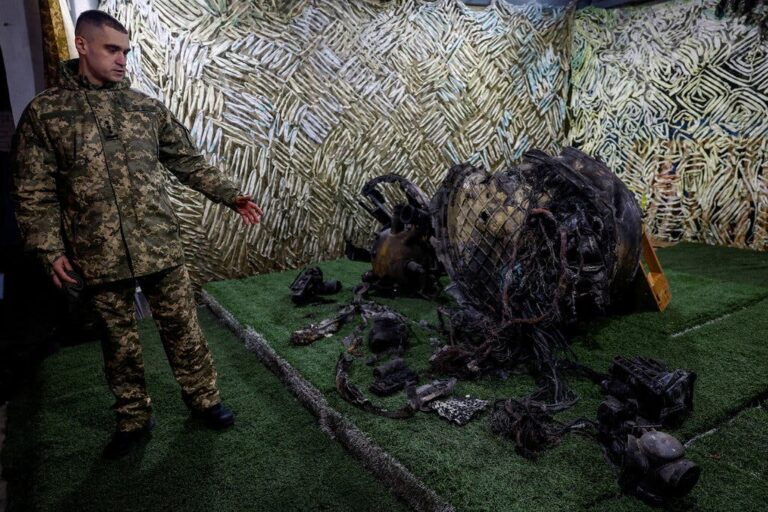
Parts of the ballistic missile named Oreshnik (hazelnut) that Russia used in a strike on Dnipropetrovsk, Ukraine, November 22, 2024
The American film maker and philanthropist who created the Star Wars and Indiana Jones franchises, George Lucas, once said, “Fear is the path to the Dark Side. Fear leads to anger, anger leads to hate, hate leads to suffering.” Within a week of Russia “testing” the Oreshnik hypersonic missile in Dnipropetrovsk, Ukraine, against which the NATO has no defence, the Western alliance is already transiting through the Dark Side from fear to hatred and hurtling toward unspeakable suffering.
The Russian Defence Ministry has disclosed that since the Oreshnik’s appearance in the war zone, Ukraine carried out two more attacks on Russian territory with ATACMS missiles. In the first attack on November 23, five ATACMS missiles were fired at an S-400 anti-aircraft missile division near the village of Lotarevka in Kursk Region. The Pantsir missile defense system, which provided cover for this division, destroyed three of them while two missiles reached the target damaging the radar. There are casualties among the personnel.
In the second attack by 8 ATACMS missiles at the Kursk-Vostochny airfield on Monday, seven were shot down while one missile reached the target. The falling debris slightly damaged the infrastructure facilities and two servicemen suffered minor injuries. The Russian MOD stated that “retaliatory actions are being prepared.”
The Russian military experts estimate that the attacks were planned for sometime and the Americans handled the targeting. On November 25, White House acknowledged for the first time the shift in policy allowing the use of ATACMS to attack Russian territory. Admiral John Kirby, coordinator for strategic communications at the White House National Security Council, revealed during a press gaggle on Monday, inter alia, saying that “well, obviously we did change the guidance and gave them [Kiev] guidance that they could use them, you know, to strike these particular types of targets.”
Following the attack on Monday, Ukraine sought an emergency meeting of the NATO–Ukraine Council in Brussels at the level of permanent representatives. Oreshnik was the main topic, and the need to strengthen air defence system. The NATO Secretary-General Mark Rutte said later, “Our support for Ukraine helps it fight, but we need to go further to change the trajectory of this conflict.”
No doubt, NATO is very concerned about the emergent situation but still won’t accept a Russian victory. Hotheads in the West are once again talking about the deployment of troops by NATO countries to Ukraine for combat operations, which was originally mooted by French President Emmanuel Macron in February.
But plainly put, unless the US is willing to put boots on the ground, the rest of NATO simply run around like a headless chicken. The UK with a 80000-strong army has very few combat units; the 175,000-strong German army has forgotten how to fight; and France is in deep political and economic crisis. As for the US, the public opinion opposes wars and president-elect Donald Trump cannot ignore it.
However, petrified that Trump may turn his back on the war, there is a school of thought in Europe that they could offer something interesting to incentivise him other than the carrot of Ukraine’s vast stores of critical minerals that Americans lack — eg., more trading incentives for America; greater spending on NATO; more pressure on Iran; “peacekeeping boots on the ground” inside Ukraine; help in Trump’s upcoming economic skirmishes with China and so on. Meanwhile, much brainstorming is going on in the US too as to how to save NATO from Trump’s scalpel.
A Guardian columnist wrote, “If the EU and UK seize the $300bn of Russian state assets sitting in Euroclear, money Putin has long written off, we can bring serious funding to the table. Trump does not need to spend any more money on Ukraine – we can buy the weapons. America can even make a profit while securing peace in Europe. Trump would be able to show how he got those parasitic Europeans to cough up, prove his detractors wrong by rebooting America’s most traditional alliances – all while putting “America first”.”
All this testifies to the angst in the European mind that Oreshnik has forced a paradigm shift in the Ukraine war. The triumphalist betting that Russia would be bluffing on nuclear deterrence has given way to fear, since Russia now may not need nuclear weapons to retaliate against attacks on its territory. Oreshnik is a non-nuclear weapon, it is by no means a weapon of mass destruction but is a high-precision weapon of immense destructive power that annihilates its targets — and Europeans have no means to defend against it.
Succinctly put, if Biden’s plan to “Trump-proof” the Ukraine war has put Europe and Ukraine in a royal fix making them a punch bag for Russia. Make no mistake, Oreshnik will soon make sure that there won’t even be a proxy regime in Ukraine for the West to “support”. It is humiliating to watch the proxy’s nose being rubbed in the dust.
A punishing Russian retaliation is imminent for the two latest ATACMS attacks. The sharp deterioration in Russia’s ties with the UK suggests a high probability that Britain could be in Moscow’s crosshairs. The station chief of the British intelligence in the embassy in Moscow has been expelled; western reports cite significant supplies of Storm Shadow missiles (numbering 150) to Ukraine lately after the election of Prime Minister Keir Starmer.
The top Russian military expert Alexei Leonkov told Izvestia newspaper, “Here is the fact of the US targeting, here are the fragments of the ATACMS missile, by which it can be clearly identified. We have the right to strike back. Where and how will be decided by the Ministry of Defence and the Supreme Commander—in-Chief. He [Putin] said that they would be warned about the impact. Our enemies must prepare for an answer.
The big question is at what point Russia may strike the NATO military hubs in Romania and Poland. The former Russian President and Security Council Deputy Chairman Dmitry Medvedev said yesterday that all bets are off. “If the conflict develops by the escalation scenario, it is impossible to rule out anything, because the NATO member states have effectively got fully involved in this conflict,” he said in an interview with Al Arabiya.
Medvedev added in chilling words, “The Western states must realise that they fight on Ukraine’s side… Meanwhile, they fight not only by shipping weapons and providing money. They fight directly, because they provide targets on Russian territory and control American and European missiles. They fight with the Russian Federation. And if this is the case, nothing could be ruled out… even the most difficult and sad scenario is possible.
“We would not want such scenario, we have all said that repeatedly. We want peace, but this peace must take Russia’s interest into consideration in full.”
Indeed, the only logical explanation for Biden’s brinkmanship in collusion with the Atlanticists in Europe in the lame duck phase of his presidency is that Oreshnik has upstaged his best-laid plans. Saner voices in Europe are speaking up. In a hugely symbolic act of defiance, Slovak Prime Minister Robert Fico disclosed on Wednesday that he has accepted an official invitation from Putin to the events in Moscow in May commemorating the 80th anniversary of Victory in World War II. Slovakia is a member country of both EU and NATO.
Austrian Chancellor Karl Nehammer in a telephone conversation with Trump, reaffirmed Austria’s readiness to serve as a platform for international peace talks on Ukraine. During the conversation, Trump reportedly evinced interest in Nehammer’s previous exchanges with Putin on Ukraine.
https://www.indianpunchline.com/atlanti ... ts-stance/
******
American Mines Sent to Ukraine Will Kill and Maim Civilians
Posted by Internationalist 360° on November 27, 2024
Eva Karene Bartlett

*Russian sappers preparing to demine orphanage in Makeevka, August 6, 2022. Photo @Eva Karene Bartlett
A former British army general, now the CEO of the largest Western NGO focused on demining efforts, has decided it is a good idea for the United States to send deadly anti-personnel mines to Ukraine (which will almost certainly use them against Russian civilians). This is absolutely insane logic.
Ghouls advocating for blowing more Russian civilians limbs off.https://t.co/1BAvftcXs2 https://t.co/o0FV4lp282
— Eva Karene Bartlett (@EvaKBartlett) November 26, 2024
The US government recently confirmed rumors that it intends to send such land mines to Ukraine. So-called “non-persistent” mines. More on these later.
On November 21, James Cowan, CEO of landmine clearance charity the HALO Trust, published an article in the London Standard titled ‘Don’t blame the US decision to supply anti-personnel mines to Ukraine’, in which he wrote that “the deployment of landmines is a grim necessity.”
Just one day prior, HALO issued a press release regarding an upcoming “critical international landmine ban meeting that will see some 164 states gather in Cambodia.” In the press release, Cowan said: “It is appalling that so many children in conflict and post-conflict zones around the world continue to be maimed or killed by indiscriminate weapons that lay waiting in the ground, often for decades.”
“This report must surely be a reminder of the need for states to hold firm on achieving the aims of the Landmine Ban Treaty.”
Are we seriously meant to believe Cowan thinks Ukraine will not use the mines against civilians, including children? Because there are already countless cases of Ukraine using a variety of mines in Donbass, including dropping them onto civilian areas in Donbass cities.
On November 2, TASS reported that “Ukrainian troops mined everything they could while fleeing Selidovo in the Donetsk People’s Republic (DPR), including private homes and apartment buildings,” noting that demining the city may take several months.
In March 2022, I went to Volnovakha (about halfway between Donetsk and Mariupol). The chief physician of the main hospital there said definitively that the Ukrainian army had occupied the hospital and before leaving they mined the entrance to the intensive care unit.
In June 2022, in Mariupol I saw Russian sappers demonstrate how they cleared buildings of mines left as booby traps by Ukrainian forces to maim or kill whoever first entered, be they military or civilian. This was a tactic that terrorists in Syria also used, as I heard in the town of Madaya after it was liberated in 2017, as well as when visiting the old city of Homs shortly after it was liberated in 2014.
The Ukrainian army has already used a variety of mines to deliberately kill or maim civilians. So to imagine that the next batch of mines shipped to Ukraine won’t be used against civilians is either hypocritical, delusional, or just plain stupid.
War correspondent Andrey Rudenko on November 20 wrote of how in addition to Ukraine’s bombing of Donbass civilians for the eight years before Russia began its special military operation, they were constantly in danger from mines: “Mined roadsides, fields, forests, cemetery areas. For the entire eight years, citizens were asked not to visit such areas, and sappers regularly demined agricultural lands, buildings and residential areas.”
He noted that “the use of anti-personnel mines on the combat line is out of the question, because the Ukrainian Armed Forces would then expose themselves to attack” since on the front line, many areas “often change hands during fighting.”
The US knows this, yet it is sending more landmines to Ukraine.
Petal mines continue to maim civilians
As one of the more insidious uses of mines, Ukraine has fired rockets containing hundreds of “petal” (PFM-1) mines onto heavily populated areas of Donbass cities. In 2022 they were fired onto central Donetsk. I saw them the next morning, scattered in the streets and parks of Donetsk, and later in nearby Makeevka.
Even with warning, these nefarious “petal”/”butterfly” mines dropped by Ukraine on Donetsk are hard to see & easy to miss.
Ukraine is committing war crimes against the civilians of the Donbass, and has been for 8+ years. pic.twitter.com/p5byG95GVG
— Eva Karene Bartlett (@EvaKBartlett) August 1, 2022
I’ve written extensively about these internationally prohibited mines. They are tiny, but powerful, and extremely difficult to see if not actively looking for them. Children and the elderly suffer the most, generally not recognizing them as a severe danger, but ordinary citizens thinking their region is clear of the mines have fallen victim as well.
As I wrote in 2022, according to Konstantin Zhukov, chief medical officer of Donetsk Ambulance Service, a weight of just 2 kg is enough to activate one of the mines. Sometimes, however, they explode spontaneously. An unspoken tragedy on top of the already tragic targeting of civilians is that dogs, cats, birds and other animals are also victims of these dirty mines.
As of now, 169 civilians have been wounded by the nasty little mines, three of whom died of their injuries. Those who don’t die usually have a foot or hand blasted off, as was the case of (then) 14-year-old Nikita, who I met in late 2022. The teen, who formerly did breakdancing and Mixed Martial Arts, lost his foot after stepping on a petal mine in a playground in Western Donetsk.
A point that bears repeating: Ukraine is party to and in violation of the Anti-Personnel Mine Ban Convention (or Ottawa Treaty), which it signed in 1999.
Defending the indefensible
In his explanation on why he supports sending landmines to Ukraine (to be used against Russian civilians), Cowan waffles on about principles of the laws of war, including:
1) “Distinction” between combatants and civilians: In other words, trying to convince readers that Ukraine would not use these against civilians. Recall we heard this dishonest argument last year when the US sent cluster munitions to Ukraine, after which, to nobody’s surprise, there were new reports of Ukraine firing cluster munitions onto Donbass civilians.
The disingenuous last part to his first point is that the mines the US would send are “non-persistent” that “can be deactivated” to mitigate harm to civilians. That doesn’t help civilians who come across them before they are “deactivated,” does it?
2) “Proportionality,” minimal collateral damage, “placement away from populated areas.” Well, given the evidence outlined above, it is clear that it was never a question of “collateral damage” but Ukraine directly inflicting death and injuries on the civilian population of Donbass. Ukrainian forces have already laid and drone-dropped so many mines in populated areas that the notion that they would suddenly stop doing so is nonsensical.
3) “Humanity,” respecting fundamental rights of all people… no comment, see above.
4) “Military Necessity.” I’m no military expert, but I highly doubt Cowan and the US think sending Kiev more landmines will be the game changer enabling Ukraine to triumph over Russia. The reality is they know these dirty mines will not help Ukraine “win” but will certainly kill and maim more Russian civilians. And they’re not only fine with that, they want that.
The Mines Advisory Group released a condemnation of the decision to send Ukraine anti-personnel mines, noting:
“While the types of AP mines which would be used in Ukraine are described as non-persistent, that does not mean they are harmless. All landmines are indiscriminate and have the potential to cause civilian harm.”
Decision-makers in the West should be made to see first-hand the bloody consequences of their actions. This is yet another example of the US and its allies prolonging civilian suffering while pretending to try to “save Ukraine” from a conflict created by NATO in the first place.
My Related:
-The West is silent as Ukraine targets civilians in Donetsk using banned ‘Petal’ mines, Aug 7, 2022, RT.com (In Gaza)
-In Just Under Three Weeks, Ukrainian-Fired Prohibited “Petal” Mines Maim At Least 44 Civilians, Kill 2, in Donetsk Region, August 23, 2022, Covert Action Magazine (In Gaza)
-Ukraine turns Donetsk into a minefield using banned ‘Petal’ mines (2022) (VIDEO)
-Donetsk Emergency Services & Sappers Clear Residential Areas of Ukraine’s Mines (2022) (VIDEO)
-Ukrainian Terrorism: Firing Munitions Containing Petal Mines On Donbass Orphanage, Another War Crime (2022) (VIDEO)
-14 Year Old Is One of 169 Donbass Civilians Maimed By Petal Mines Fired By Ukraine (2022) (VIDEO)
-Volnovakha Physician: Ukrainian forces occupied the hospital, mined the ICU entrance (2022) (VIDEO)
-Here’s why Human Rights Watch deliberately only scratched the surface in exploring Ukraine’s use of banned ‘petal’ mines, March 28, 2023, RT.com (In Gaza)
-US cluster munitions will bring more pain and death to Donbass civilians, and Washington doesn’t care, August 1, 2023, RT.com (In Gaza)
–What I’ve seen of Ukraine’s war crimes against civilians in the Donbass over the years
–The Donbass: My Articles, Videos & Interviews From/On the Donetsk & Lugansk People’s Republics (2019-present)
https://libya360.wordpress.com/2024/11/ ... civilians/

































